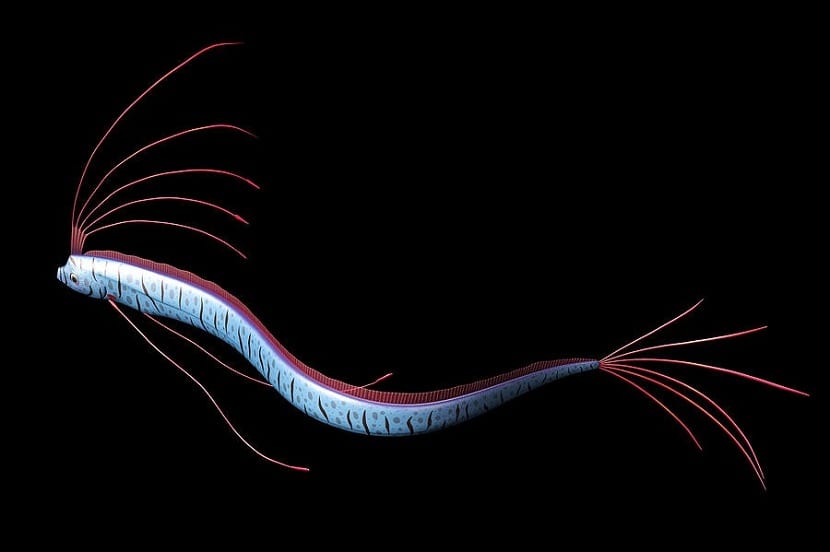
Eoarfish is one of the most common species that exist in all temperate and tropical zones of the world. Its scientific name is Regalcus glesne and belongs to the regalecidae family. They are established in the marine waters of practically the whole world. It is considered one of the longest bony fish in the world, reaching 17 meters in length.
A fish of this length looks more like a monster than a regular fish, so it is worth knowing. Do you want to learn everything about this fish?
Characteristics of the oarfish
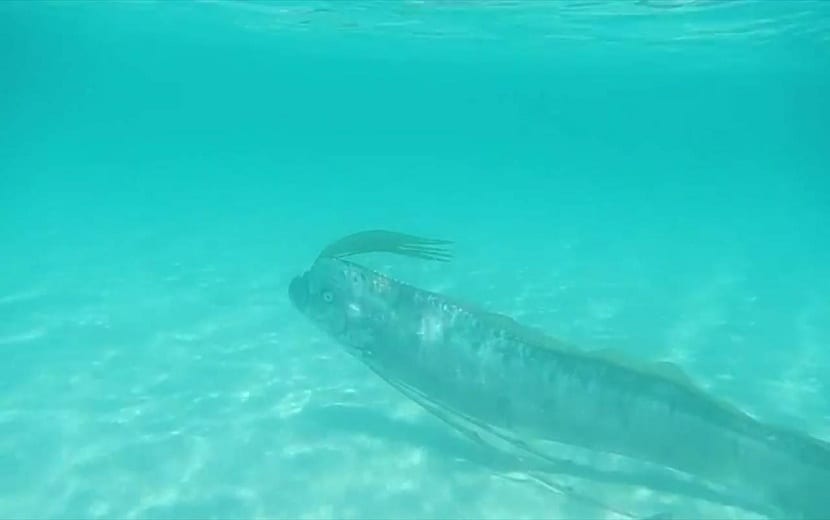
Although it is a fish that is about 17 meters in length, It is not the largest fish in the world. It has a large dorsal fin that gives it a completely rare and snake-like shape.
It is not a dangerous animal, since it has a fairly calm demeanor. Because it almost always stays in the depths, not much is known about this fish. They are capable of traveling to the surface when they are near death or too sick.
Its body is quite slender and flattened, hence it is also known as a saber fish. It does not have scales, but rather has an envelope composed of guanine of a silver color. Although his mouth is protruding, he does not show his teeth.
Its dorsal fin is very large. It goes from the top of the eyes to the end of the tail. It turns red or pink and practically takes up your entire body. The dorsal fin has about four hundred thorns, twelve of them elongated, which gives it a very striking appearance.
The pelvic fins have the same elements as the dorsal fin, and in its shape it resembles an oar (hence its common name). On the other hand, the pectoral fins are very small, difficult to see and their caudal and anal fins are only very small.
Behavior of the Regalecus glesne
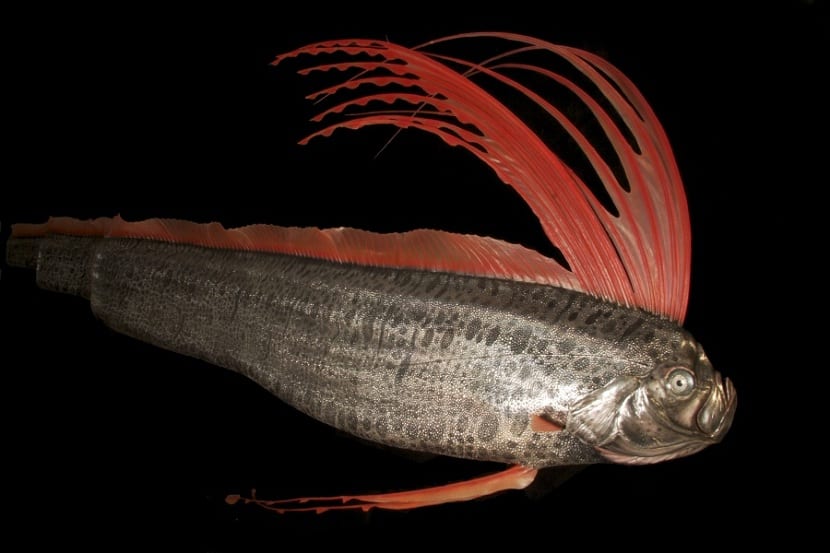
As mentioned before, the oarfish is a very calm fish. You could say that it is a shy fish that is embarrassed to attract attention. When it is stalked by its predators it flees to the depths and takes refuge among the rocks. It spends most of its life in the depths swimming adrift and protecting itself from predators.
To swim it uses its dorsal fin and it does so vertically. They can be found in the depths swimming vertically. It can also swim horizontally, since they have a quite successful locomotion system that allows it to execute various maneuvers to change direction and direction. It does this thanks to its dorsal fin.
They are generally solitary fish and can rarely be seen near another specimen of the same species. It can be seen with a small group when they move to another habitat, although they do not remain together, but keep a relative distance.
Most of the time it can be found floating near the banks because are swept away by ocean currents when they are already sick or old and are not able to resist currents. They are considered true sea monsters for their size as well as stone fish.
Habitat and area of distribution
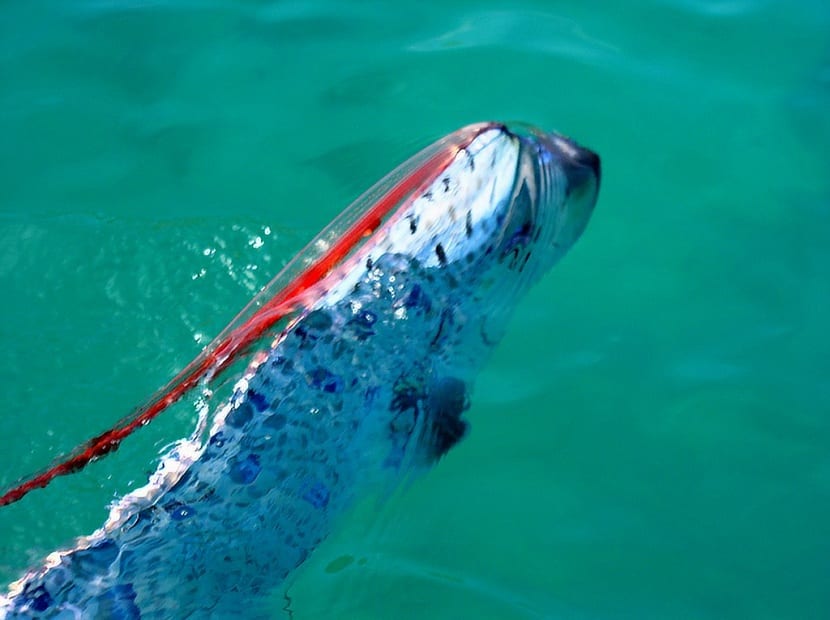
The saber fish inhabits the depths to about 1000 meters. Thanks to its ability to adapt its body temperature to around twenty degrees Celsius, it can be found in almost all the world's oceans, except for the polar areas. It is generally a migratory fish, so it does not stay long in one area. However, it can be found relatively easily in the tropical regions of the temperate oceans.
They move great distances from different waters to seek food and shelter and flee from their predators. It is able to navigate from depths of 20 to 1000 meters in a fast way.
Food
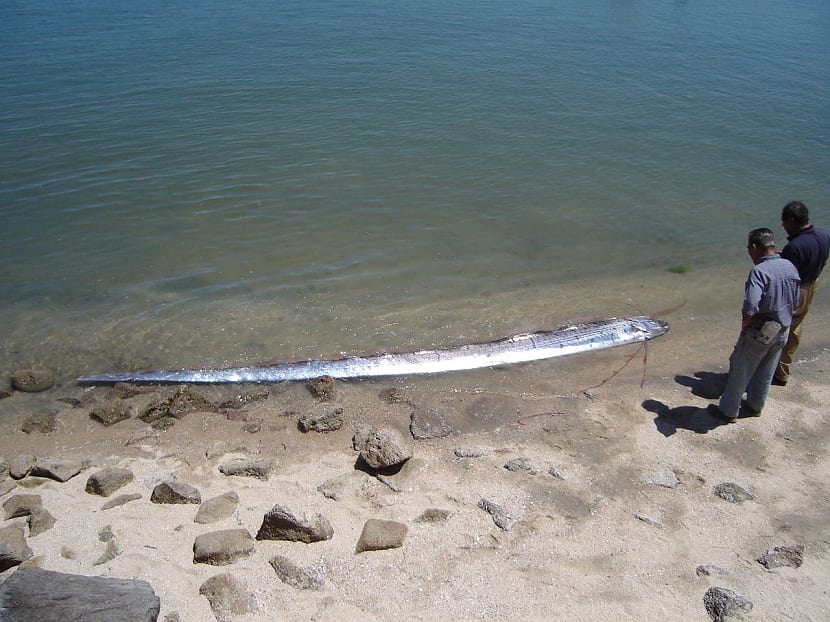
Their diet is fully carnivorous. They enter their diet squid, small fish, crustaceans and even plankton. It makes its catches with great effort, since it has to use its gills.
As it does not have teeth, it cannot bite its prey for food. But since evolution is very intelligent, this species has adapted to it. The lack of teeth makes up for it with gill rakers designed for hunting. They are shaped similar to a rake and are used to pull their prey more comfortably.
By swimming vertically, you gain an advantage over other fish, such as the flying fish. These fish swim horizontally and can stay close to the surface of the water.
Reproduction
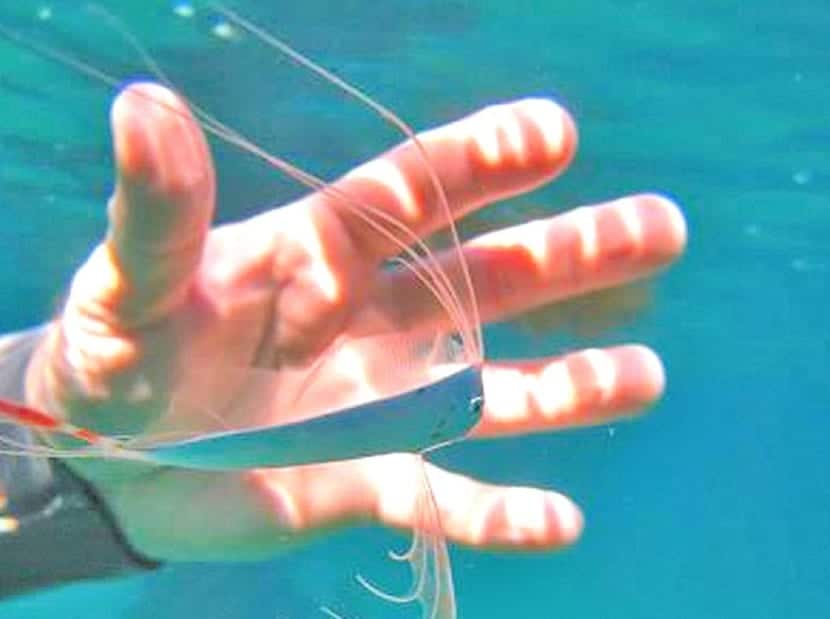
Although little is known about this fish, it is known that the spawning season takes place between July and December. At this time is when they deposit a greater quantity of eggs. The size of these range from 2,5 millimeters and they are thrown towards the surface where they keep floating until they hatch.
The oarfish are fertilized externally, since the eggs are fertilized outside the body of the female. The male remains in the surroundings of the female to protect her from any danger. When the female sheds the eggs, the male drops his sperm and fertilizes them.
When the eggs hatch, the larvae remain good weather in areas close to the surface until they are swept away by the currents to the bottom. Once they are at the bottom of the oceans, they stay there until they develop into adulthood.
Curiosities of the saber fish
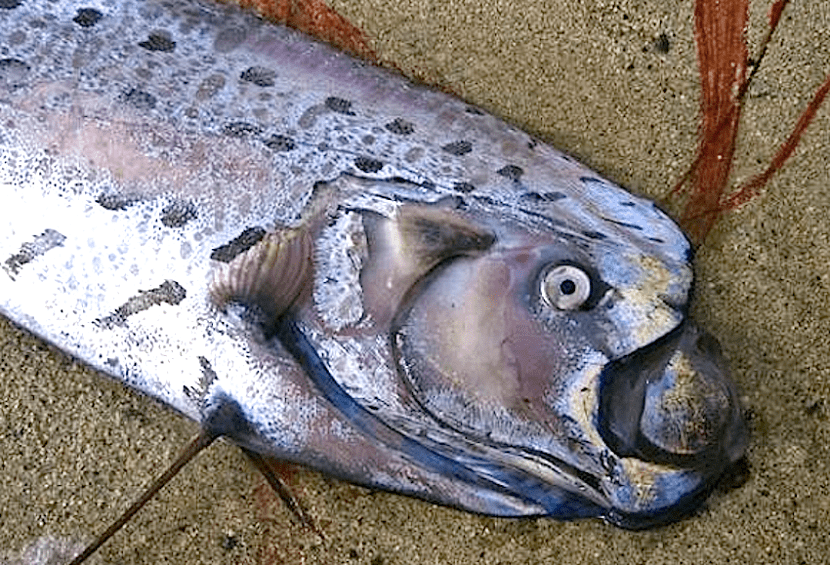
The oarfish has a characteristic that makes it special and different from the rest de peces and it is not its length. Is about the ability to self-aim a limb. It is believed that it does this by biting its own tail to free itself from its predator. However, this he cannot do because he lacks teeth.
What happens is that it is able to detach itself from the final part of its body to escape from its predators and then it can recompose itself. This can be done numerous times throughout your life.
As you can see, the oarfish is a surviving fish and worth knowing.